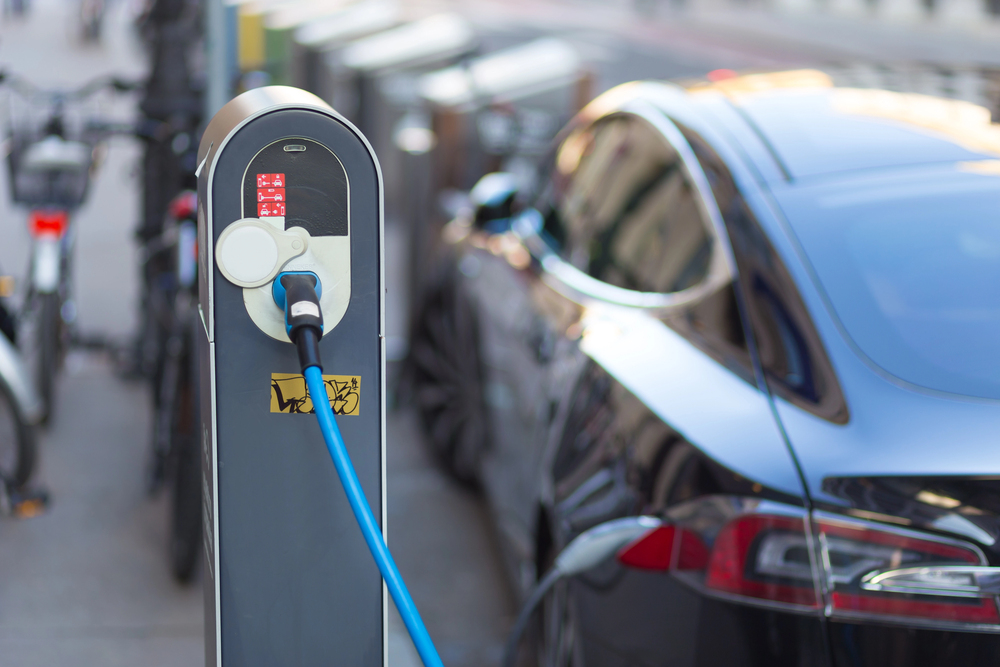How EVs are transforming, not destroying, the aftermarket
Share
Share

The rise of electric vehicles isn’t spelling doom for the automotive aftermarket — it’s creating a whole new landscape of opportunity, emphasized a pair of industry observers.
Jack Zhuang, a partner with business consultancy firm Roland Berger who leads the electric vehicle value chain and supplier-related practice, is pushing back against the narrative of pure disruption.
During a recent webinar hosted by his company, the question was posed to the panel taking part about the negative impact of EVs on the auto care sector. Yes, there’s disruption taking place, Zhuang acknowledged. But that’s not the whole story.
“Saying [EVs are] purely negative is over-simplifying this transformation,” he explained during the webinar Navigating the future of the automotive aftermarket, which contained insights from Roland Berger’s latest Aftermarket Pulse report.
While certain traditional components will decline, EVs are generating exciting new revenue streams for repair shops, he noted. These emerging opportunities include areas like high-voltage, batteries, and thermal management services.
“We’re seeing new revenue streams like high-voltage systems, battery diagnosis, battery refurbishment, and also thermal management repairs,” Zhuang said, including heat pumps.
Software-driven services are also becoming increasingly important.
“Data-driven services and software electronics, update over the air, update support could be new revenue opportunities for independent aftermarket providers,” Zhuang noted.
EV repairs might be less frequent but more complex, he added, potentially commanding higher margins and labour rates.
“The repair types could be higher margins, but of course, lower frequency,” Zhuang said. “EV repairs are less frequent, but a bit more complex. This is compounding higher labour rates.”
Mathieu Bernard, also a Roland Berger partner, added context by highlighting that the transition will be gradual. Hybrid vehicles, for instance, will create intermediate opportunities for both traditional and emerging automotive service providers.
“This transition is going to last quite some time,” Bernard noted. “There are going to be intermediary stages, like hybrids, which also need different types of combustion.”
He suggested this gradual shift creates opportunities for traditional players while also opening doors for new electric-oriented businesses.
“While the EVs could be disrupting the traditional market models, they don’t eliminate the demand. I think they are just redefining it,” Zhuang said.
Bernard further elaborated on the broader ecosystem implications, pointing out that wholesale distributors will play a crucial role.
“They have to manage additional levels of complexity for their garages,” he explained. “They have to be a little bit more flexible in terms of SKUs.”
Max Wegner, a principal at Roland Berger who co-leads the automotive aftermarket team, highlighted the evolving landscape of EV repairs in the independent aftermarket during the webinar.
He noted that early EV technological repairs were typically covered under warranty by OEM-affiliated shops. However, as EVs age and move out of warranty, more complex repairs are being sought in the independent aftermarket.
Interestingly, technicians’ confidence in handling EV repairs has been gradually decreasing over the past few years as it becomes harder and harder to keep up with the change.
“Their confidence has been slightly decreasing because they’ve been getting more complex repairs, and then they realize the need to upskill and to improve their capabilities,” he said.
As a result, many distribution companies are now focusing their training efforts predominantly on EV capabilities and enabling independent workshops to service electric vehicles.
Wegner’s key insight is that a “wait and see” approach is risky for independent shops. If they don’t develop EV repair capabilities, they risk losing customers to OEM workshops.
“It’s a little of a little bit of a chicken-and-egg problem now,” he observed. “And if you’re not capable in the independent aftermarket to service these vehicles, you may face a risk of EV customers learning that they need to go to OEM workshops. So let’s say a pure delay and wait tactic is probably not the right one to play.”
Image credit: Depositphotos.com
These aren’t “exciting new revenue streams”, they’re prohibitively costly repairs that will likely far more often result in these 4 wheeled toasters being replaced instead of fixed, just like most other things in this modern world. Who’s spending $700 to repair a 10 year old washing machine that costs $1000 to replace with brand new? Same concept. Due to the highly politicized nature of this sector (according to articles from this very publication included), I am highly sceptical of anyone with rose coloured glasses on in regards to these things. It would be one thing if this spelled disaster for our industry, but was largely a win for the consumer and environment, but we should all now know that is not the forgone conclusion we are supposed to think it is.
Nice piece — clear and hopeful. Do you have any examples of independent garages that have successfully added battery refurbishment or OTA software services? Curious how costly the initial investment and training tend to be.
Leave a Reply